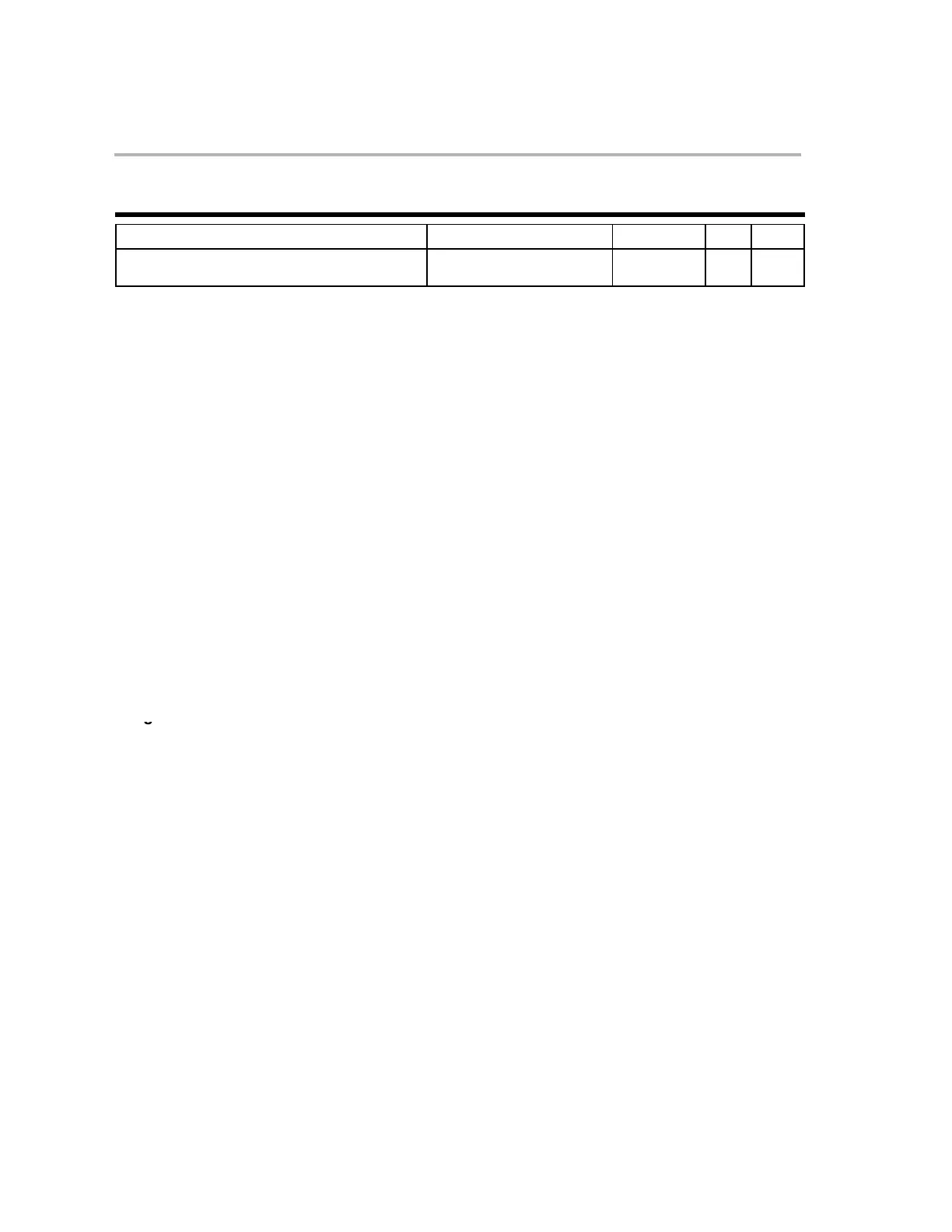MAXCUL P,loc32
6-150
MAXCUL P,loc32 Conditionally Find the Unsigned Maximum
SYNTAX OPTIONS OPCODE OBJMODE RPT CYC
MAXCUL P,loc32
0101 0110 0101 0001
0000 0000 LLLL LLLL
1 − 1
Operands P Product register
loc32 Addressing mode (see Chapter 5)
Description Based on the state of the N and Z flags, conditionally compare the unsigned
contents of the P register with the 32-bit, unsigned content of the location
pointed to by the “loc32” addressing mode and load the P register with the
larger of the two numbers:
if( (N=1) & (Z=0) )
P = [loc32];
if( (N=0) & (Z=1) & (P < [loc32]) )
V=1, P = [loc32];
if( (N=0) & (Z=0) )
P = unchanged;
Note: The “P < [loc32” operation is treated like a 32-bit unsigned compare.
This instruction is typically combined with the MAXL instruction to form a
64-bit maximum function. It is assumed that the N and Z flags will first be set
by using a MAXL instruction to compare the upper 32 bits of a 64-bit value.
The MAXCUL instruction is then used to conditionally compare the lower 32
bits based on the results of the upper 32-bit comparison.
Flags and
N
If (N = 1 and z = 0) then load P with [loc32].
Modes
Z
If (N = 0 and Z = 1) compare the unsigned content of the P with the unsigned
[loc32] and load P with the larger of the two.
If (N = 0 and Z = 0) do nothing.
V
If (N = 0 AND Z = 1 AND P < [loc32] ) then V is set; otherwise, V is unchanged.
Repeat
This instruction is not repeatable. If this instruction follows the RPT instruction, it
resets the repeat counter (RPTC) and executes only once.
Example
; Saturate 64-bit Var64 as follows:
; if(Var64 > MaxPos64 ) Var64 = MaxPos64
; if(Var64 < MaxNeg64 ) Var64 = MaxNeg64
MOVL ACC,@Var64+2
MOVL P,@Var64+0
; Load ACC:P with Var64
MINL ACC,@MaxPos64+2 ; if(ACC:P > MaxPos64) ACC:P = MaxPos64
MINCUL P,@MaxPos64+2
SB saturate,OV
MAXL ACC,@MaxNeg64+2 ; if(ACC:P < MaxNeg64) ACC:P = MaxNeg64
MAXCUL P,@MaxNeg64+0

